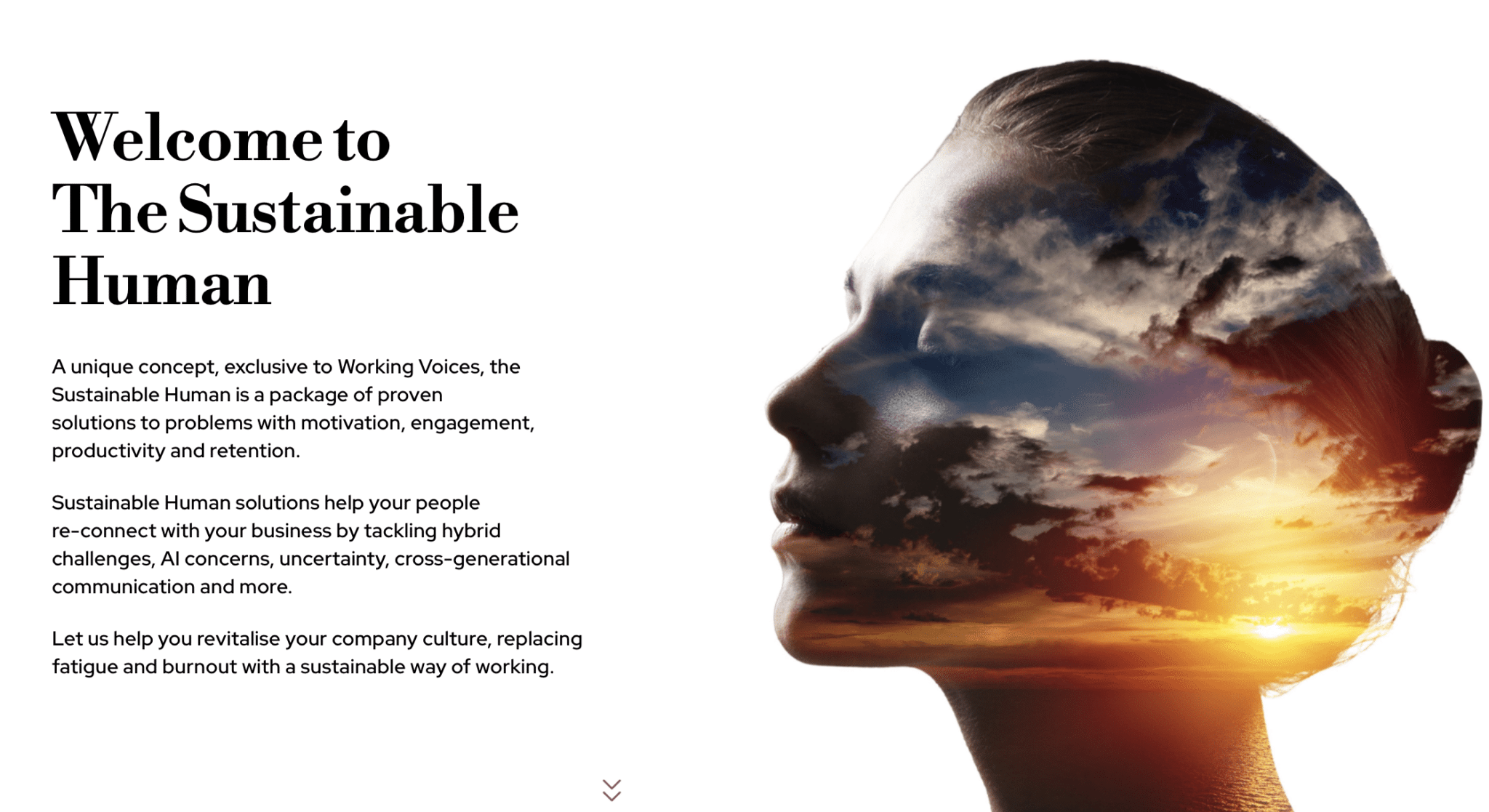Wellbeing is casting off its image of cosiness in favour of something more radical. Organisations around the world are struggling with long-term problems with disengagement, and many are looking for something more effective than fancy coffee and discounted yoga. Deep-seated issues demand a radical reworking of wellbeing that begins with a rethink of company culture. What does this involve, and does it actually work?
Research suggests 93% of employees believe their wellbeing at work is as important as their salary. Deloitte’s 2023 Well-Being at Work survey found that, for 74% of respondents, improving their well-being “is more important than advancing their career.”
No surprise then that, by 2026, the global workplace wellbeing market is set to reach $94.6 billion – up from $61.2 billion in 2021. In 2022, large employers were spending an average of $11 million per year on corporate wellbeing.
Yet despite this investment, sick leave rates are soaring. In the US, unplanned absences were estimated (in 2022) to cost the economy $47.6 billion in lost productivity. In 2023, sick leave cost the UK economy £26 billion. Sickness absence is at the “highest level we’ve reported for 15 years”, according to the Chartered Institute of Personnel and Development, “with around three-quarters of respondents (76%) reporting stress-related absence.”
Employees feel stressed, because of work. Yet, reluctant to acknowledge this, many employers persist with stressful work practices – hoping that wellbeing apps and perks will compensate, or at least provide a tick box response that suggests they are taking wellbeing seriously.
“Employers want to be seen as doing something, but they don’t want to look closely and change the way work is organized”, according to Tony D. LaMontagne, a professor of work, health and wellbeing at Deakin University in Melbourne, Australia.
What is wellbeing in the workplace?
Workplace wellbeing can refer to two things: the sense of wellness that employees feel at work, and workplace programmes aimed at supporting this. Because businesses rely on a healthy workforce, many invest in optional initiatives intended to support their employees’ physical and/or mental health.
In the US, wellness – as opposed to wellbeing – often refers to workplace programmes that are not optional but which employees are required to sign up to, at risk of financial penalties.
Optional wellbeing programmes share a common feature in that they assign responsibility to the individual. Employees choose what to participate in, and for how long. In this way, wellbeing is delegated to individuals, who are expected to assume responsibility for managing the physical and psychological fallout of their employer’s working practices.
Take-up of these programmes is, however, limited. Deloitte found that 68% of workers surveyed said they did not use the full value of the wellbeing resources offered by their organisations. This figure chimes with similar research suggesting that only a third of US workers regularly participate in workplace wellbeing programmes. However, a survey for insurer Vitality found that only 25% of 4,000 respondents said they used wellbeing initiatives offered by their employer.
The authors of Deloitte’s 2023 report, The well-being imperative, suggest that instead of putting the burden of action on employees, “organisations need to take a hard look at the structure of work.”
Why is wellbeing important in the workplace?
Workplace wellbeing is important in addressing the fundamental challenges to physical and mental health that undermine productivity, for example stress. US researchers found “that more than 120,000 deaths per year and approximately 5% – 8% of annual healthcare costs are associated with and may be attributable to how US companies manage their workforces.”
Medical research has found evidence for a link between workplace stress and an increased risk of stroke, the leading cause of long-term disability among adults and the second most common cause of death globally.
Stroke, which is particularly associated with long working hours, and/or shift work, stems from elevated stress hormones that lead to overactivation of the ‘fight or flight’ response. This disrupts sleep, increases muscle tension, impairs metabolic function, and has negative effects on many of the body’s organs.
Stress has also been linked to high blood pressure, high cholesterol, heart disease, obesity, cancer, and autoimmune diseases, and can have a damaging impact on mental health, leading to depression and anxiety.
The mental health “crisis”
In 2022, the American Psychological Association (APA) found that “America’s mental health is in crisis” and that business leaders are “well-positioned to influence a positive culture shift and normalize mental health in the workplace.” In 2024, The Burnout Report from Mental Health UK said that the combination of many factors – such as working longer hours, and societal changes caused by the pandemic – mean Britain risks becoming a “burned out” nation.
Advice from the US surgeon general cited evidence suggesting that 76% of US workers have experienced at least one symptom of a mental health condition, and that 84% of respondents believe their workplace conditions contributed to at least one mental health challenge.  The APA also noted that employees with high levels of stress are more likely to miss work or to show lower engagement and commitment while at work, which can negatively affect an organisation’s bottom line. Perhaps for these reasons, the APA suggests that employers are taking mental health more seriously than they have in the past.
The APA also noted that employees with high levels of stress are more likely to miss work or to show lower engagement and commitment while at work, which can negatively affect an organisation’s bottom line. Perhaps for these reasons, the APA suggests that employers are taking mental health more seriously than they have in the past.
 Outreach charity Business in the Community found that in small or mid-sized organisations, 88% of employees with work-related poor mental health did not disclose these problems to either their line manager or HR. Larger organisations sometimes have in-house qualified staff. However, to access them an employee might first need to reveal their darkest moments to their line manager, leading to concerns about breaches of confidentiality.
Outreach charity Business in the Community found that in small or mid-sized organisations, 88% of employees with work-related poor mental health did not disclose these problems to either their line manager or HR. Larger organisations sometimes have in-house qualified staff. However, to access them an employee might first need to reveal their darkest moments to their line manager, leading to concerns about breaches of confidentiality.
Other organisations offer therapy apps, where employees can access a virtual therapist, whose training, qualifications (if any) or even identity can’t be verified. Worse, some apps connect to AI chatboxes that, dispensing with an actual human, try their hand at multi-choice answers to your harrowing psychological challenges.
The so-called ‘Uberisation’ of mental health care brings with it a Candyland approach to therapy. Rather than breakthroughs and progress, this approach offers routine ‘checking-in’ and levelling up through apps that dish out ‘you can do it’ statements more usually associated with sportswear.
Gen Z and millennials
Britain’s millennials and Gen Z are missing the equivalent of a day’s work every week due to mental health struggles, according to the Vitality survey mentioned above. While the average worker feels unable to work 50 work days a year, this number rises to 60 among those under the age of 30. Younger generations are also more likely than their older counterparts to leave a job that has a negative impact on their mental health.
These figures highlight differences between generations that can lead to mistaken assumptions. Older people grumbling about ‘snowflake kids’ may forget that 20-year-olds today experienced formative years that were very different to the way things were done in the past. Digital tech has created a culture of isolation and weakened interpersonal skills; influencers imply that followers, fame and fortune lie within the grasp of all but the most unfortunate; and Covid disrupted two years of education and socialising.
“It’s little surprise that many 18-to-34-year-olds feel extremely anxious, stressed and alone”, said Dr Alex George, Youth Mental Health Ambassador, and a former NHS doctor. Mental Health UK’s Burnout Report found that while younger people are more likely to take time off due to mental health issues, nine out of 10 adults experienced “high or extreme levels of stress last year [2023] – a figure that cuts across almost all generations.”
Mental Health UK’s Burnout Report found that while younger people are more likely to take time off due to mental health issues, nine out of 10 adults experienced “high or extreme levels of stress last year [2023] – a figure that cuts across almost all generations.”
Common strategies in workplace wellbeing
Workplace wellbeing includes many options of varying standards of effectiveness. Choices made by businesses usually reflect budget, trends, and ease of delivery rather than any detailed medical research. These can include in-person sessions in mindfulness, yoga, or physical fitness; virtual therapies – delivered by apps focusing on sleep, nutrition or exercise; perks like free eye tests, gym discounts, or cycle to work schemes; environmental factors like fruit bowls, fresh coffee, and ergonomic chairs; and in-house specialists who can help individuals manage specific problems in physical or mental health.
Many of these are of genuine value. Mindfulness can be effective in helping individuals find a little mental space during the day. But it’s not a comprehensive strategy capable of alleviating the long-term causes of disengagement, for example poor working practices. Nor is it universally popular across the workforce. And the same can be said of apps, and gym discounts and fruit bowls.
Workplace wellbeing isn’t working
Are most forms of workplace wellbeing effective? Not according to Oxford University researcher Dr. William Fleming. Analysing survey responses from 46,336 employees, Fleming found that those who took part in programmes such as mindfulness classes, coaching, apps, or relaxation classes were no better off than colleagues who did not.
Despite considering the outcomes of 90 different interventions, Fleming found that almost none of these initiatives had any significant impact on workplace wellbeing or job satisfaction. Training sessions on resilience and stress management even seemed to have a negative effect. Only charity or volunteer work seemed to have improved wellbeing.
Fleming said: “If employees want access to mindfulness apps and sleep programmes and wellbeing apps, there is not anything wrong with that, but if you’re seriously trying to drive employees’ wellbeing, then it has to be about working practices.”
Fleming’s research echoes similar findings in a US study of nearly 33,000 people who were working for a large warehousing company and whose verdict on wellbeing was similarly lukewarm.
A better strategy must begin with two questions: what are the key challenges to wellbeing, and how can a successful strategy support the whole workforce, not just the 30-odd per cent who are happy to participate?
Finding the factors that impact workplace wellbeing
Poor workplace wellbeing stems from a complex tangle of causes and factors. Unpicking them, however, is sometimes blurred by denial – organisations like to think stress is not an issue – and by a disconnect between the C-suite and their employees.
While 70% of employers believe they provide good access to health and wellness support, only 23% of employees agree. Based on a survey of 2,000 executives and managers from the US, UK, Canada, and Australia, researchers “found that more than three out of four executives inaccurately believe that their workforce’s well-being improved [in the previous 12 months], illustrating that leaders don’t have a firm grasp on how their teams are really doing.” So what’s causing stress? Employers sometimes find it tempting to grasp at simple levers within easy reach – such as pay. But this response doesn’t answer the question. In fact, an international survey found that 58% of respondents in the US and 54% in the UK said they have previously taken a pay cut to accept a job that made them happier. These figures “should serve as a wakeup call for employers”, said business psychologist Portia Hickey, “if your staff aren’t happy, they will consider going elsewhere, no matter how much you pay them.”
So what’s causing stress? Employers sometimes find it tempting to grasp at simple levers within easy reach – such as pay. But this response doesn’t answer the question. In fact, an international survey found that 58% of respondents in the US and 54% in the UK said they have previously taken a pay cut to accept a job that made them happier. These figures “should serve as a wakeup call for employers”, said business psychologist Portia Hickey, “if your staff aren’t happy, they will consider going elsewhere, no matter how much you pay them.”
So what are the leading causes of stress and poor wellbeing? For us at Working Voices, we found that there are four principal contenders:
1. ‘Doing more with less’
The financial crash that began in 2007 led to the collapse of banks and other businesses. Redundancies and tighter budgets led to tough working practices, such as longer hours, that lingered through the years that followed. People were expected to do more with less. Many still are, leading to fatigue and burnout.
This way of working contributes to pressure that leads to ‘toxic environments’, recognised as behaviours that are disrespectful, non-inclusive, unethical, cut-throat, or abusive. Research suggests a toxic corporate culture is “10.4 times more powerful than compensation in predicting a company’s attrition rate compared with its industry.”
2. The rise of tech
Throughout this same period, technological developments revolutionised the way we lived our lives at work and at home. Smartphones arrived in 2007, and since then we’ve never looked up. From that moment on, we were always on, always available to our employer, 24/7.
Tech facilitates flexibility such as working from home and virtual calls, which might explain why employees are spending 250% more time in meetings today compared with pre-pandemic days. But virtual calls, work-monitoring apps, and communicating via messaging are isolating experiences. Through tech, we’ve never been more connected – and disconnected. Driving isolation and loneliness, tech contributes to the breakdown of company culture.
3. Lack of employee autonomy
Process-heavy, tech-focused workplaces are less human than is healthy. In particular, app overload is reshaping the digital workplace. People who are required to use workplace apps, such as Slack, Evernote, Google Drive, and Dropbox must continuously toggle between them, including some that require hourly updates. Research by RingCentral found that workers lose up to 32 days a year navigating between the very apps meant for workplace productivity. Meanwhile, Deloitte found that workers switching tasks constantly, and not being able to make their own decisions about how they work are “the most detrimental aspects to wellbeing in terms of how work gets done.” Lack of workplace autonomy disrupts the experience, creativity, and empathy, that give people abilities AI can never match.
Research by RingCentral found that workers lose up to 32 days a year navigating between the very apps meant for workplace productivity. Meanwhile, Deloitte found that workers switching tasks constantly, and not being able to make their own decisions about how they work are “the most detrimental aspects to wellbeing in terms of how work gets done.” Lack of workplace autonomy disrupts the experience, creativity, and empathy, that give people abilities AI can never match.
4. Lack of workplace humanity
One of our training participants, a manager at a multinational, told us. “I don’t work here to make friends, I don’t want to encourage colleagues ‘to be themselves’. I want them to streamline their behaviour, I want meetings to be dull but effective. I just want people to get on with the job.”
This attitude brings tension to the workplace and is counter-productive. Streamlined efficiency doesn’t come from people who are being asked to dismiss their personality strengths and function instead as an automaton. This is dehumanising and demoralising and therefore leads to disengagement, which is notoriously inefficient. Dr Emma Seppälä, from the Yale School of Management, asked “so what leads to employee happiness? A workplace characterized by humanity. An organizational culture characterized by forgiveness, kindness, trust, respect, and inspiration.”
How can leaders support wellbeing at work?
By improving their people’s physical and mental wellbeing, leaders will strengthen productivity and protect retention. But these benefits will only come through an authentic commitment to tackle the deep-seated causes of disengagement, poor wellbeing, and stress. Anything less won’t work.
It won’t be easy. The causes of poor wellbeing relate to current working practices. These must be honestly re-assessed, and better developed in a way that supports the whole workforce, from the C-suite to the interns. Optional sessions in mindfulness won’t hit the mark. Only company culture reaches everyone.
Organisations committed to improving wellbeing must re-purpose company culture, replacing poor work practices with sustainable ways of working. What do these look like? For a detailed look at how we came to our conclusions on this, visit our Complete Guide to the Sustainable Human.
Others have come to similar conclusions. For Yale’s Dr Seppälä, “hundreds of studies conducted by pioneers of positive organizational psychology, including Jane Dutton and Kim Cameron at the University of Michigan and Adam Grant at Wharton, demonstrate that a culture characterized by a positive work culture leads to improved employee loyalty, engagement, performance, creativity, and productivity.”
 The Sustainable Human: prevention rather than cure
The Sustainable Human: prevention rather than cure
At Working Voices, we spent three years assessing the causes of disengagement and developing an effective strategy capable of supporting employees. We concluded that organisations are best advised to develop a company culture that successfully builds:
- Connection
- Trust
- Respect
- Safety
- Belonging
Among companies surveyed in Deloitte’s 2020 Global Human Capital Trends Report, 93% agreed that a sense of belonging in the workforce drives organisational performance. Belonging has the potential to combat challenges to company culture associated with the rise of tech, remote working, and hybrid patterns.
Belonging, connection, trust, respect, and safety together support a strategy that builds teamwork, encourages creativity, strengthens resilience, and restores engagement. Bringing people together in social, sustainable working practices, this strategy offers a new, radical approach to wellbeing – we call it social wellbeing.
Social wellbeing lies at the heart of our Sustainable Human strategy, which can be implemented through a range of training modules. Apps and mindfulness can support individuals but they are not a group exercise that helps people simultaneously learn how to come together in redeveloping their company culture.
Given the extent of stress, fatigue, and disengagement in the workplace, organisations must accept that current strategies aren’t working. Denial isn’t an appropriate response to stress that can do so much damage. A radical reworking of wellbeing is needed, led by leaders committed to a healthier and more productive future.





